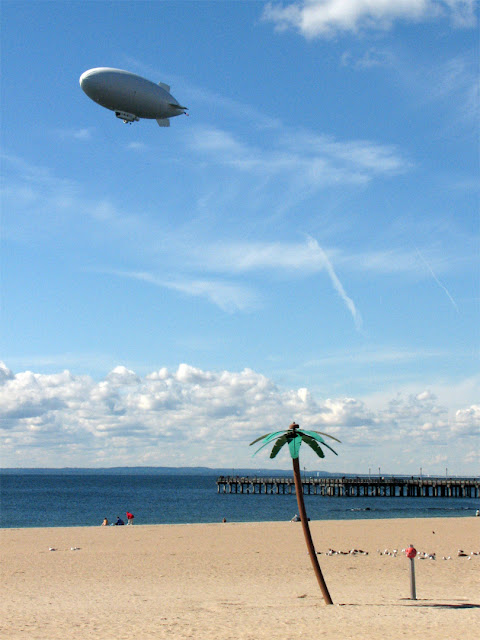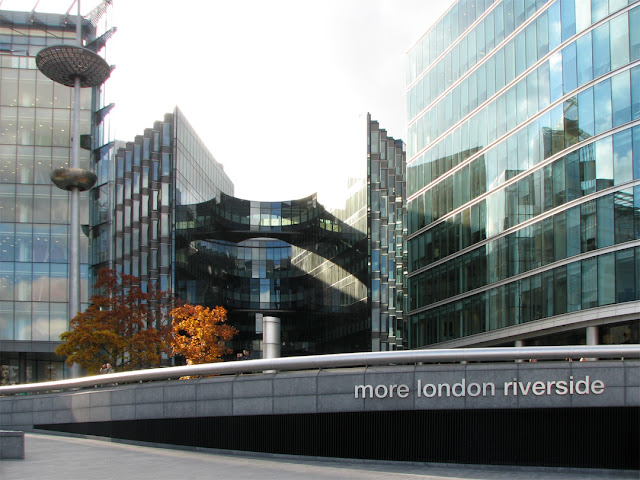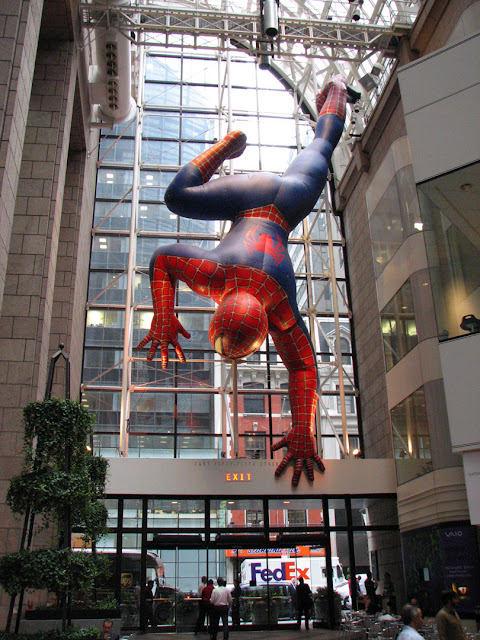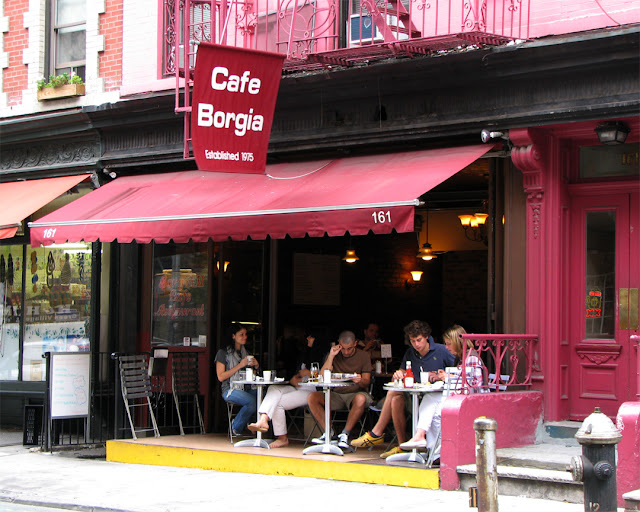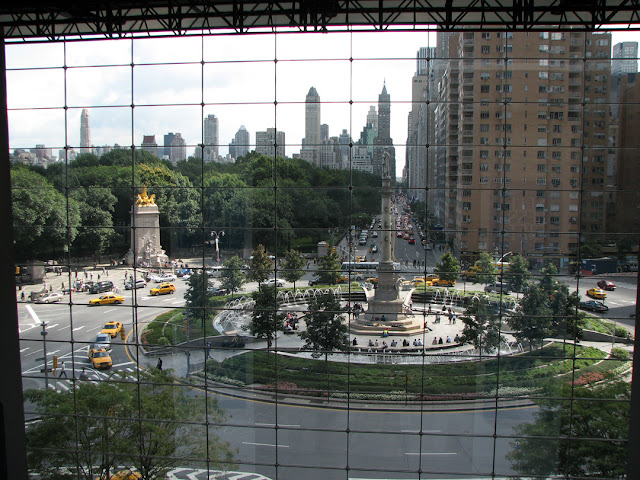Saturday, October 31, 2009
Friday, October 30, 2009
Thursday, October 29, 2009
Fluctuat nec mergitur
“Fluctuat nec mergitur” (Tossed by the waves but not sunk)
The coat of arms of the city of Paris
Petit Palais
Avenue Winston-Churchill
Quartier des Champs-Élysées, 8th arrondissement
Paris, July 2009
Wednesday, October 28, 2009
Tuesday, October 27, 2009
Monday, October 26, 2009
Double View
Statue of Saint Paul
St Paul's Cathedral
Ludgate Hill
London, October 2009
VP in search of “support” for the above picture
(Photo by Trillian)
Sunday, October 25, 2009
Shakespeare & Co
“Shakespeare and Company” is being remodeled
Rue de la Bûcherie
Quartier de la Sorbonne, 5th arrondissement
Paris, July 2005
Saturday, October 24, 2009
Friday, October 23, 2009
The Ritz Hotel
The Ritz Hotel
Piccadilly, City of Westminster
London, January 2008
“The Ritz London is a 5-star luxury hotel at 150 Piccadilly in London, England. A symbol of high society and luxury, the hotel is one of the world's most prestigious and best known. The Ritz has become so associated with luxury and elegance that the word ‘ritzy’ has entered the English language to denote something that is ostentatiously stylish, fancy, or fashionable. The hotel was opened by Swiss hotelier César Ritz in 1906, eight years after he established the Hôtel Ritz Paris. It began to gain popularity towards the end of World War I, with politicians, socialites, writers and actors in particular. David Lloyd George held a number of secret meetings at the Ritz during the latter half of the war, and it was at the Ritz that he made the decision to intervene on behalf of Greece against the Ottoman Empire. Noël Coward was a notable diner at the Ritz in the 1920s and 1930s.” (The Ritz Hotel, Wikipedia)
Thursday, October 22, 2009
Wednesday, October 21, 2009
Tuesday, October 20, 2009
Monday, October 19, 2009
Equestrian statue of Ferdinand Foch
Equestrian statue of Ferdinand Foch by Georges Malissard, 1928
Lower Grosvenor Gardens, Belgravia
London, January 2008
“The equestrian statue of Ferdinand Foch stands in Lower Grosvenor Gardens, London. The sculptor was Georges Malissard and the statue is a replica of another raised in Cassel, France. Foch, appointed Supreme Commander of the Allied Forces on the Western Front in the Spring of 1918, was widely seen as the architect of Germany's ultimate defeat and surrender in November 1918. Among many other honours, he was made an honorary Field marshal in the British Army, the only French military commander to receive such a distinction. Following Foch's death in March 1929, a campaign was launched to erect a statue in London in his memory. The Foch Memorial Committee chose Malissard as the sculptor, who produced a replica of his 1928 statue of Foch at Cassel. The statue was unveiled by the Prince of Wales on 5 June 1930. Designated a Grade II listed structure in 1958, the statue's status was raised to Grade II in 2016.” (Equestrian statue of Ferdinand Foch, Wikipedia)
Sunday, October 18, 2009
Saturday, October 17, 2009
Friday, October 16, 2009
Peter II, Count of Savoy
Statue of Peter II, Count of Savoy by Frank Lynn-Jenkins, 1904
Savoy Hotel
Strand
London, January 2008
Thursday, October 15, 2009
Anna Pavlova
Statue of Anna Pavlova (replica), 2006
Victoria Palace Theatre
Victoria Street, City of Westminster
London, January 2008
“Anna Pavlova (1881-1931) was a celebrated Russian prima ballerina and the principal artist of the Imperial Russian Ballet. Her signature role was ‘The Dying Swan’, which she performed thousands of times. Her statue on top of the cupola of the Victoria Palace Theatre was commissioned by the owner Sir Alfred Butt (1878-1962), possibly to the design of architect Frank Matcham (1854-1920). Pavlova appeared on stage there, when the theatre first opened in 1911. The original statue was taken down during WWII and lost. The present gilded bronze figure is a replica based on photographs of the original. It was erected in June 2006.” (Anna Pavlova, Public Statues and Sculpture Association)
Wednesday, October 14, 2009
New York City
“One need never leave the confines of New York”
North Cove, Battery Park
New York, September 2007
“One need never leave the confines of New York to get all the greenery one wishes—I can't even enjoy a blade of grass unless I know there's a subway handy, or a record store or some other sign that people do not totally regret life”
From “Meditations in an Emergency” by Frank O'Hara
Tuesday, October 13, 2009
Domine Jesus Rex et Redemptor
“Domine Jesus Rex et Redemptor per Sanguinem tuum salva nos”
(Lord Jesus, King and Redeemer, save us through your blood)
Westminster Cathedral
Victoria Street, Westminster
London, January 2008
“In 1895, the cathedral was dedicated to the Most Precious Blood of Our Lord Jesus Christ. This is commemorated by the Latin dedication above the portal tympanum: ‘Domine Jesus Rex et Redemptor per Sanguinem tuum salva nos’ (Lord Jesus, King and Redeemer, save us through your blood). The Feast of the Dedication of the Cathedral is celebrated each year on 1 July, which from 1849 until the Second Vatican Council (1969) was the feast of the Most Precious Blood of Our Lord Jesus Christ.” (Westminster Cathedral, Wikipedia)
Monday, October 12, 2009
Blue Drummer
Detail of “Walls and Trumpets” by Ofra Zimbalista
Maya House
Borough High Street, Southwark
London, January 2008
Sunday, October 11, 2009
View from Cardinal Place
Westminster Cathedral
(View from Cardinal Place)
Victoria Street, Westminster
London, January 2008
“The Metropolitan Cathedral of the Most Precious Blood, informally known as Westminster Cathedral, is the largest Roman Catholic church in England and Wales. The shrine is dedicated to the Blood of Jesus Christ and is the seat of the Archbishop of Westminster. The original site on which the cathedral stands in the City of Westminster was purchased by the Diocese of Westminster in 1885, and construction was completed in 1903. Designed by John Francis Bentley in a 9th-century Christian neo-Byzantine style, and accordingly made almost entirely of brick, without steel reinforcements, Sir John Betjeman called it ‘a masterpiece in striped brick and stone’ that shows ‘the good craftsman has no need of steel or concrete.’ The cathedral merited an Apostolic Visit from Pope John Paul II on 28 May 1982 and Pope Benedict XVI in 18 September 2010.” (Westminster Cathedral, Wikipedia)
Saturday, October 10, 2009
Friday, October 9, 2009
Thursday, October 8, 2009
Wednesday, October 7, 2009
St Pancras New Church
Caryatids, south elevation
St Pancras New Church
Euston Road
London, January 2008
“At the east end is an apse, flanked by the church's most original features: two tribunes designed in imitation of the Erechtheum, with entablatures supported by caryatids. Unlike those on the Erechtheum, each caryatid holds a symbolic extinguished torch or an empty jug, appropriate for their positions above the entrances to the burial vault. There is a stone sarcophagus behind the figures in each tribune, and the cornices are studded with lion's heads. The caryatids are made of terracotta, constructed in sections around cast-iron columns, and were modelled by John Charles Felix Rossi, who provided all the terracotta on the building. The upper levels of the tribunes were designed as vestries.” (St Pancras New Church, Wikipedia)
Tuesday, October 6, 2009
Monday, October 5, 2009
Chanel Motorcycle
Chanel’s 2010 pre-spring photo shoot
Place Vendôme
Quartier de la Place-Vendôme, 1st arrondissement
Paris, July 2009
Sunday, October 4, 2009
Saturday, October 3, 2009
St Pancras Chambers
St Pancras Chambers
(St Pancras Renaissance London Hotel)
Euston Road
London, January 2008
“The St. Pancras Renaissance London Hotel forms the frontispiece of St Pancras railway station in St Pancras, London. The station is one of the main rail termini in London and the final stop for international trains departing to Paris, Brussels, Amsterdam and other destinations in mainland Europe. It re-opened in 2011, and occupies much of the former Midland Grand Hotel designed by George Gilbert Scott which opened in 1873 and closed in 1935. The hotel is managed by Marriott International. The building as a whole including the apartments is known as St Pancras Chambers and between 1935 and the 1980s was used as railway offices. The upper levels of the original building were redeveloped between 2005 and 2011 as apartments by the Manhattan Loft Corporation. Its clock tower stands at 76 m (249 ft) tall, with more than half its height usable. The hotel is located in the vicinity of Euston, King's Cross and St Pancras railway stations.” (St Pancras Renaissance London Hotel, Wikipedia)
Friday, October 2, 2009
Thursday, October 1, 2009
Gare d'Orsay
Former railway station destinations
Musée d'Orsay
Rue de la Légion d'Honneur
Quartier Saint-Thomas-d'Aquin, 7th arrondissement
Paris, July 2009
Subscribe to:
Comments (Atom)

